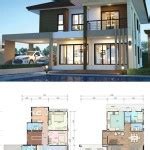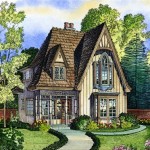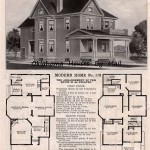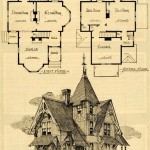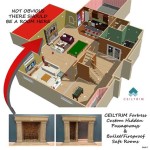Carriage house plans are blueprints or designs that provide detailed instructions for the construction of a carriage house. A carriage house, also known as a coach house or stable block, is a building specifically designed to store and maintain horse-drawn carriages or other types of vehicles, such as automobiles.
Carriage houses were once commonly found on large estates and rural properties, serving as a practical necessity for housing and servicing the transportation needs of the household. Today, carriage house plans are often used as inspiration for the construction of outbuildings, workshops, garages, or additional living spaces on properties, offering a blend of traditional charm and modern functionality.
The main body of this article delves into various aspects of carriage house plans, including their historical origins, architectural features, and contemporary uses. It also offers guidance on selecting the most suitable carriage house plan for your specific needs, whether you’re seeking an authentic restoration or a modern adaptation.
Here are 8 important points about carriage house plans:
- Historical origins in horse-drawn carriage storage
- Architectural features influenced by regional styles
- Contemporary uses as garages, workshops, living spaces
- Customization options for size, configuration, style
- Consideration of local zoning regulations
- Importance of proper ventilation and drainage
- Integration with existing architectural elements
- Versatility for various property types
These points provide a concise overview of key aspects to consider when planning and designing a carriage house.
Historical origins in horse-drawn carriage storage
Carriage houses emerged during the 18th century as a response to the growing popularity of horse-drawn carriages as a primary mode of transportation. Prior to this period, carriages were often stored in barns alongside livestock and other farm equipment. However, as carriages became more elaborate and expensive, the need for dedicated storage facilities became apparent.
- Protection from the elements
Carriage houses provided shelter from rain, snow, and sunlight, which could damage the delicate finishes and upholstery of carriages. They also offered protection from theft and vandalism.
- Specialized storage
Carriage houses were designed with specific features to accommodate the unique storage requirements of carriages. These features included wide doors for easy access, high ceilings to accommodate tall carriages, and sturdy floors to support the weight of the vehicles.
- Convenience and efficiency
Carriage houses were typically located near the main house or stables, making it convenient for owners to access their carriages. They also streamlined the process of preparing carriages for use, as they often included areas for harnessing horses and storing tack.
- Status symbol
In addition to their practical functions, carriage houses also served as a status symbol, reflecting the wealth and prestige of their owners. Elaborate carriage houses were often designed to complement the main house and enhance the overall aesthetic of the property.
The historical origins of carriage houses in horse-drawn carriage storage continue to influence their design and use today. While carriages may no longer be the primary mode of transportation, carriage houses remain popular as garages, workshops, and other functional outbuildings.
Architectural features influenced by regional styles
The architectural features of carriage houses vary depending on the region in which they were built. Local building traditions, available materials, and climate conditions all played a role in shaping the unique characteristics of carriage houses in different parts of the world.
- New England
Carriage houses in New England are often characterized by their clapboard siding, gabled roofs, and white trim. They may also feature cupolas or widow’s walks, which were used for ventilation and observation. The simple, functional design of New England carriage houses reflects the region’s Puritan heritage.
- Mid-Atlantic
Carriage houses in the Mid-Atlantic region are often larger and more elaborate than those in New England. They may feature brick or stone construction, with slate or tile roofs. Palladian windows and other classical architectural elements are also common. The more ornate design of Mid-Atlantic carriage houses reflects the region’s wealth and cosmopolitanism.
- South
Carriage houses in the South are often characterized by their wide porches and raised foundations. They may also feature decorative ironwork and other elements of the region’s Creole and plantation architecture. The open and airy design of Southern carriage houses reflects the region’s warm climate and relaxed lifestyle.
- West
Carriage houses in the West are often characterized by their rustic and utilitarian design. They may be built of log or frame construction, with simple gable roofs and few decorative elements. The rugged design of Western carriage houses reflects the region’s frontier heritage.
These are just a few examples of the many regional styles that have influenced the architectural features of carriage houses. Today, carriage house plans often incorporate elements from multiple regions, creating a unique and eclectic blend of styles.
Contemporary uses as garages, workshops, living spaces
In addition to their historical function as storage facilities for horse-drawn carriages, carriage houses are now commonly used for a variety of other purposes, including garages, workshops, and living spaces.
-
Garages
Carriage houses make excellent garages, providing ample space for vehicles and storage. Their wide doors and high ceilings can accommodate even large vehicles, and their sturdy construction ensures durability and protection from the elements. Carriage house garages can be customized to include additional features such as built-in storage, workbenches, and climate control systems.
-
Workshops
Carriage houses are also ideal for use as workshops, providing a dedicated space for hobbies, projects, and repairs. Their large size and open floor plans allow for a variety of activities, and their sturdy construction can withstand the demands of heavy equipment and machinery. Carriage house workshops can be customized to include specific features such as specialized lighting, ventilation systems, and tool storage solutions.
-
Living spaces
In recent years, carriage houses have become increasingly popular as living spaces. Their unique architectural features and spacious interiors make them ideal for conversion into apartments, studios, or guest houses. Carriage house living spaces often feature high ceilings, large windows, and exposed beams, creating a charming and inviting atmosphere. They can be customized to include modern amenities such as kitchens, bathrooms, and laundry facilities.
The contemporary uses of carriage house plans are not limited to garages, workshops, and living spaces. They can also be adapted for use as offices, retail spaces, or even event venues. The versatility of carriage house plans makes them a valuable asset for a wide range of residential, commercial, and recreational purposes.
Customization options for size, configuration, style
Carriage house plans offer a high degree of customization to meet the specific needs and preferences of the owner. This includes the ability to customize the size, configuration, and style of the carriage house to suit the intended use and the surrounding environment.
- Size
Carriage house plans can be customized to accommodate a variety of vehicle and storage needs. The size of the carriage house can be adjusted to provide space for a single vehicle, multiple vehicles, or even a workshop or living space. The height of the carriage house can also be customized to accommodate taller vehicles or equipment.
- Configuration
Carriage house plans can be customized to include a variety of features and configurations, such as multiple bays, workshops, lofts, and living spaces. The configuration of the carriage house can be tailored to the specific needs of the owner, whether it is for storing vehicles, pursuing hobbies, or providing additional living space.
- Style
Carriage house plans can be customized to match the architectural style of the main house or other buildings on the property. This includes a variety of styles, such as traditional, colonial, Victorian, and modern. The exterior finishes of the carriage house can also be customized to match the surrounding environment, such as using stone, brick, or siding.
- Other customization options
In addition to size, configuration, and style, carriage house plans can be customized with a variety of other options, such as:
- Doors and windows: The type and placement of doors and windows can be customized to meet the specific needs of the owner.
- Roofing materials: A variety of roofing materials can be used, such as asphalt shingles, metal roofing, or tile.
- Exterior finishes: The exterior finishes of the carriage house can be customized to match the surrounding environment, such as using stone, brick, or siding.
- Interior finishes: The interior finishes of the carriage house can be customized to match the intended use, such as using drywall, paneling, or exposed beams.
The ability to customize carriage house plans allows owners to create a unique and functional structure that meets their specific needs and preferences.
Consideration of local zoning regulations
When planning to build a carriage house, it is important to consider local zoning regulations. Zoning regulations are laws that govern the use of land and buildings in a particular area. These regulations can impact the size, height, and placement of a carriage house on your property.
- Setbacks
Setbacks are the minimum distances that a carriage house must be set back from the property lines. These setbacks are designed to ensure that there is adequate space between buildings and to maintain the character of the neighborhood.
- Height restrictions
Zoning regulations may also impose height restrictions on carriage houses. These restrictions are designed to prevent buildings from becoming too tall and blocking sunlight from neighboring properties.
- Permitted uses
Zoning regulations may also specify the permitted uses for carriage houses. In some cases, carriage houses may only be used for storage or parking. In other cases, they may be permitted for use as living spaces or workshops.
- Architectural guidelines
Some zoning regulations may also include architectural guidelines that specify the design and appearance of carriage houses. These guidelines may include restrictions on the materials that can be used, the style of the building, and the color of the exterior.
It is important to check with your local zoning board to determine the specific regulations that apply to your property. Failure to comply with zoning regulations can result in fines or even the removal of your carriage house.
Importance of proper ventilation and drainage
Proper ventilation and drainage are essential for the longevity and functionality of any carriage house. Ventilation helps to circulate air and prevent moisture buildup, which can lead to mold, mildew, and rot. Drainage helps to prevent water from pooling around the foundation of the carriage house, which can cause structural damage and flooding.
There are a number of ways to ensure proper ventilation in a carriage house. One important factor is to provide adequate openings in the walls and roof. This can be done through the use of windows, vents, and cupolas. It is also important to make sure that the carriage house is not too tightly sealed, as this can prevent air from circulating. In addition, the use of vapor barriers can help to prevent moisture from entering the carriage house from the outside.
Proper drainage is also essential for the health of a carriage house. This can be achieved by grading the land around the carriage house so that water flows away from the foundation. It is also important to install gutters and downspouts to direct water away from the roof and walls. In areas with heavy rainfall, it may also be necessary to install a French drain or other drainage system to prevent water from pooling around the carriage house.
Failure to provide proper ventilation and drainage can lead to a number of problems, including:
- Mold and mildew growth
- Rot and decay
- Structural damage
- Flooding
- Insect infestation
By following these tips, you can help to ensure that your carriage house is well-ventilated and properly drained, which will extend its lifespan and protect your investment.
In addition to the above, it is also important to consider the specific climate and weather conditions in your area when designing your carriage house ventilation and drainage systems. For example, in areas with high humidity, it is important to provide adequate ventilation to prevent moisture buildup. In areas with heavy rainfall, it is important to install a robust drainage system to prevent flooding.
Integration with existing architectural elements
When designing a carriage house, it is important to consider how it will integrate with the existing architectural elements on your property. This includes the main house, any other outbuildings, and the overall landscape. By carefully considering the integration of your carriage house, you can create a cohesive and visually appealing property.
- Matching architectural style
One of the most important considerations is to match the architectural style of your carriage house to the main house and other buildings on your property. This will help to create a sense of unity and make your carriage house look like it belongs. For example, if your main house is a traditional colonial style, you would want to choose a carriage house plan that reflects that style. This could include features such as clapboard siding, a gabled roof, and white trim.
- Complementary materials
In addition to matching the architectural style, you should also choose materials for your carriage house that complement the materials used on the main house and other buildings. This will help to create a cohesive look. For example, if your main house is made of brick, you could choose a carriage house plan that uses brick or stone veneer. If your main house is made of wood, you could choose a carriage house plan that uses wood siding or shingles.
- Appropriate scale and proportion
It is also important to consider the scale and proportion of your carriage house in relation to the main house and other buildings on your property. You want your carriage house to be large enough to accommodate your needs, but you don’t want it to overwhelm the other buildings on your property. A good rule of thumb is to make the carriage house about two-thirds the size of the main house. This will help to create a balanced and visually pleasing look.
- Landscaping
Finally, don’t forget to consider the landscaping around your carriage house. The landscaping can help to tie the carriage house into the rest of your property and create a cohesive look. For example, you could plant trees and shrubs around the carriage house to create a sense of privacy and enclosure. You could also add a walkway or patio to connect the carriage house to the main house and other buildings on your property.
By following these tips, you can ensure that your carriage house is well-integrated with the existing architectural elements on your property. This will create a cohesive and visually appealing property that you will enjoy for years to come.
Versatility for various property types
Carriage house plans offer a high degree of versatility, making them suitable for a wide range of property types. Whether you own a large estate, a suburban home, or a small city lot, there is a carriage house plan that can meet your needs.
- Residential properties
Carriage houses are a popular choice for residential properties of all sizes. They can be used as garages, workshops, storage sheds, or even guest houses. Carriage houses can be customized to match the architectural style of the main house, creating a cohesive and visually appealing property.
- Commercial properties
Carriage houses can also be used for commercial purposes. They can be converted into offices, retail stores, or even restaurants. Carriage houses offer a unique and charming setting for businesses, and they can help to attract customers. For example, a coffee shop housed in a carriage house could create a cozy and inviting atmosphere for customers.
- Recreational properties
Carriage houses are also a great option for recreational properties. They can be used as bunkhouses, game rooms, or even home theaters. Carriage houses can provide a comfortable and convenient space for guests to relax and enjoy their time on your property. For example, a carriage house on a hunting property could provide a place for hunters to store their gear and socialize after a day in the field.
- Agricultural properties
Carriage houses can also be used on agricultural properties. They can be used as storage sheds for equipment and supplies, or they can be converted into workshops or offices. Carriage houses can help to keep your agricultural property organized and efficient. For example, a carriage house on a horse farm could provide a place to store saddles and tack, as well as a workshop for repairs.
The versatility of carriage house plans makes them a valuable asset for a wide range of property types. Whether you are looking for a functional space for storage, work, or recreation, a carriage house plan can help you create the perfect space for your needs.










Related Posts




